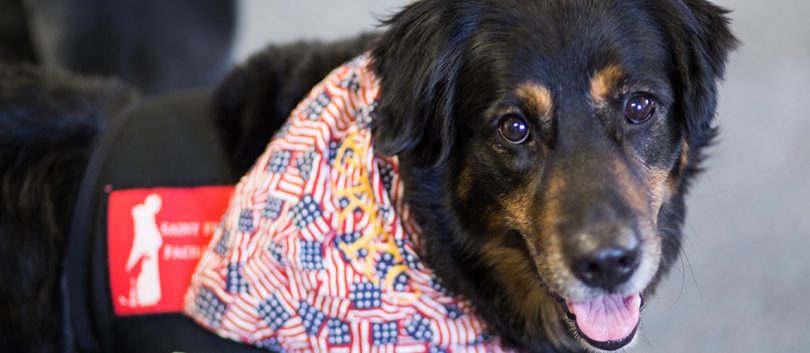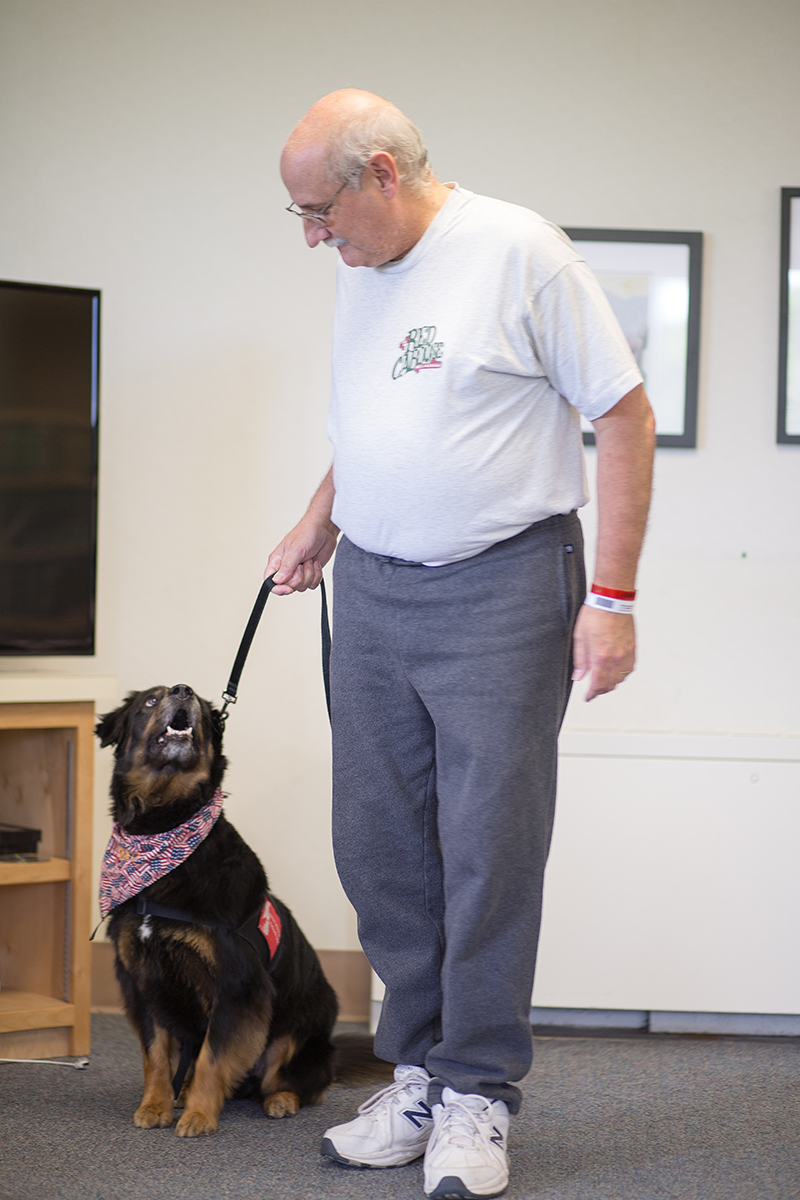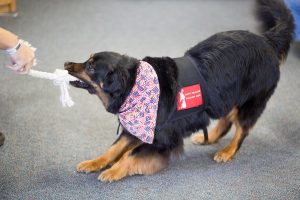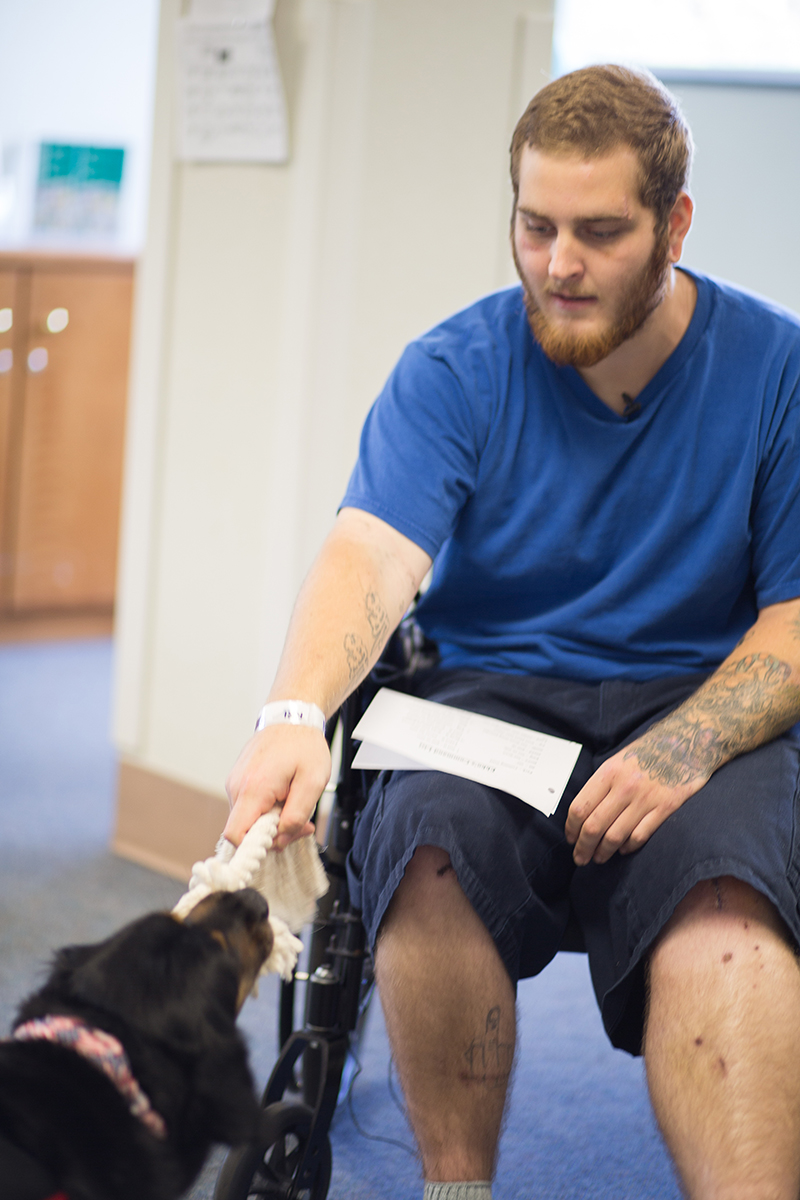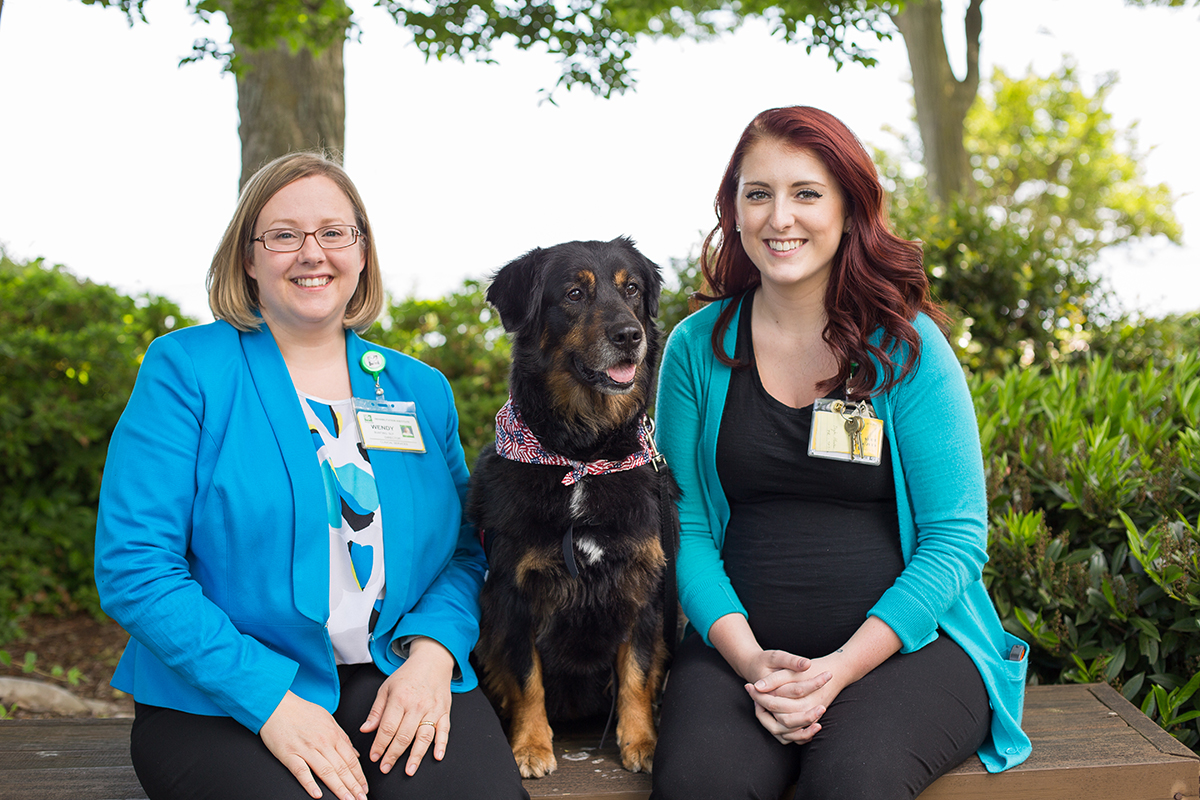One of the most noticeable staff members at Riverside Rehabilitation Institute isn’t a nurse, therapist or even a doctor. She doesn’t even speak English. Instead, she walks on four legs, wags her tail and has a fondness for Milk-Bones.
Meet Ekko, the 6-year-old service dog who has been bringing joy to countless patients at the Newport News, Virginia, rehab center for the past four years. For some, the medicine Ekko doles out is priceless.
“She just has a way of making you feel better,” says Jerry Williams, a 79-year-old Carrollton, Virginia, man who spent several weeks at the center in May after having a stroke. “She has a tendency to make you happy, to brighten your day.”
Ekko came to the Riverside facility four years ago by way of Saint Francis Service Dogs, a Roanoke-based organization that places dogs with people who are living with disabilities, including multiple sclerosis, paralysis, stroke, arthritis and brain injuries.
Initially trained as a service dog, Ekko switched gears after a few years and received further training as a facility dog. Unlike service dogs, which are placed with a specific person needing assistance, facility dogs are partnered with a professional working in a health care, courtroom or educational setting.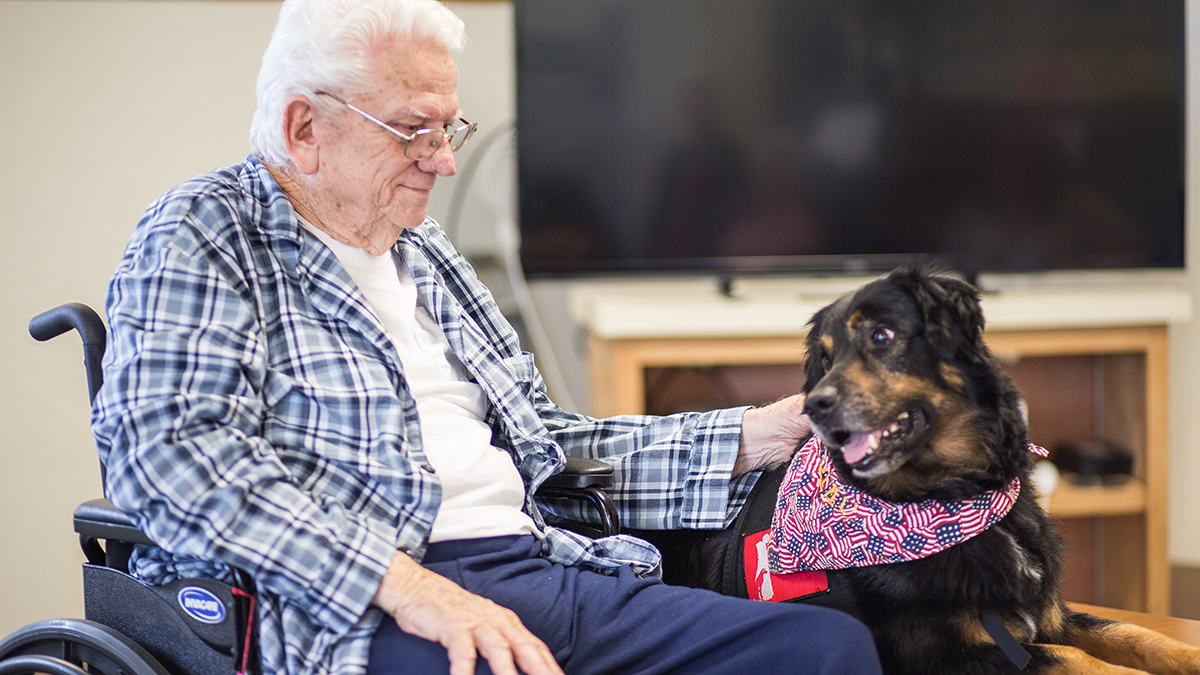
In a school setting, a facility dog can help in special education classes with social interaction. In a courtroom, a dog can be a comfort to sexually abused children while they’re being interviewed, or help those recovering from psychological trauma.
In a hospital, dogs help with physical and mental rehabilitation, motivating patients and doing tasks that help with mobility. They also help increase morale among the staff.
Riverside Health System, which operates five hospitals and a number of rehab, behavioral and retirement facilities in Hampton Roads, was the first health facility in Virginia to receive a service dog when Ekko arrived at the rehab center in 2011. Riverside Rehabilitation Institute, located off the Chesapeake Avenue waterfront, is a 50-bed, full-service physical rehabilitation center and the only stroke-certified rehab hospital on the Peninsula.
Ekko joined the center’s staff after Wendy Bunting, director of inpatient therapy services, submitted an application to Saint Francis. Ekko lives with Bunting and her family in Hampton, Virginia, but at Riverside she works with recreational therapist Liz Faulls. The two women affectionately refer to each other as “work mom” and “home mom,” and both love Ekko dearly. They are both trained to work with service dogs.
A golden retriever mix with black and tan fur, Ekko was part of a litter of three puppies donated to Saint Francis as potential service dogs. She spent her first year in the Prison Pup Program at Bland Correctional Center, where puppies are raised by inmates and learn basic obedience and socialization.
An inmate named Mike named her Ekko, although no one is quite sure where the name comes from. There are several theories, says Bunting—her 10-year-old son is convinced it’s because Ekko’s bark is so loud it creates an echo.
Both Ekko and her sister were brought to Riverside to see who would work better with the patients. Ekko’s laid back personality won out, and her sister, Jigsaw, was given to a little boy with seizures. The third pup in the litter, a boy, was adopted by people who run an equine therapy program.
Ekko works at the Riverside center Monday through Friday. Her day starts at home when Bunting calls for her to get dressed—the signal for Ekko to put on her special vest that identifies her as a service dog.
The vest includes zippers, snaps and buttons on which recovering stroke patients can practice. Another mode of therapy allows patients to dress Ekko or put bows in her fur (for Cinco de Mayo, she wore a green tutu and a tissue paper flower)—it’s all part of range-of-motion, mobility and strength exercises. Plus, it’s just plain fun.
“It improves their mood as well as meets their functional goals,” Bunting explains.
At one point, Ekko knew some 100 commands. At the Riverside Rehabilitation Institute, she primarily uses 20 to 30 commands regularly that are tailored to working with rehab patients. Patients are generally a mixture of those recovering from brain injuries, strokes and broken bones.
But the benefits of having Ekko around go far beyond the physical, say those who work with her. Just the sight of Ekko, whose furry snout naturally seems to stay in a mischievous grin, is enough to make the gruffest of people soften. Patients often return to the center long after they’ve left to bring Ekko treats, like a box of her beloved Milk-Bones or a scarf embroidered with her name.
“Patients absolutely light up when they see Ekko in the hallway,” Faulls says. “Patients and staff are happier when she’s around.”
Take 20-year-old Taren Burkett. The Newport News man was recovering from injuries he received in a serious car accident—a broken femur and arm—when he met Ekko during one of his rehab sessions. The tattooed Burkett, slumped in a wheelchair when he rolled into the therapy room, couldn’t help but smile when Ekko came prancing in.
Burkett began learning some of what Ekko can help with—actions such as simply holding a rope bone while Ekko tugs on it can help patients get their strength back. Faulls teaches patients the commands they need get Ekko to do actions such as sit, tug, wait and drop.
For someone like Burkett, Ekko can serve as a walking companion as he begins to reuse his leg. The same goes for stroke patients—during patient Keith Wilhelm’s therapy session, he practiced walking Ekko around the therapy room and getting her to heel by his side.
When Wilhelm arrived at the rehab center after his stroke, he couldn’t move his right leg. Two weeks later and a day away from being discharged, the 51-year-old Gloucester, Virginia, man proudly strutted back and forth with barely a limp while holding Ekko’s leash.
During one busy morning, Ekko moved seamlessly from appointment to appointment, changing up tasks at Faulls’ request with only occasional drops to the floor for belly rubs or hopeful sniffs at Faulls’ pocket for a treat. Her session with Williams, a stroke patient, found her stretched out on a table while Williams sat in his wheelchair next to her. Carefully, he groomed her silky black fur, working his partially paralyzed left arm.
“You look in her eyes and she looks back at you like she has a question for you, ‘What can I do for you?’ ” Williams says. “It’s a real nice therapy for anybody, especially an old country boy like me. She has a way of making you feel better.”
It’s true, say Bunting and Faulls: Ekko has a knack for reading people. She’s especially good with patients who get agitated, which sometimes happens when someone is recovering from a brain injury.
“She knows how you feel,” Faulls says. “She picks up so well not only how the patients feel, but how others feel. She’s very attentive to giving you the attention you need at that moment.”
For those going through a rough recovery, or those simply having a bad day, Ekko is the perfect medicine, Faulls adds. The sight of Ekko’s funny tan eyebrows, or a nuzzle of her soft head, brings a bit of home into the sometimes bleak, institutional setting of a hospital.
“An animal is something that makes you feel happy and makes you feel comfortable,” Faulls says. “This is already a hard enough setting for most people coming in. If we can provide that comfort level and that way to feel at home, then we’re doing something right already.”

